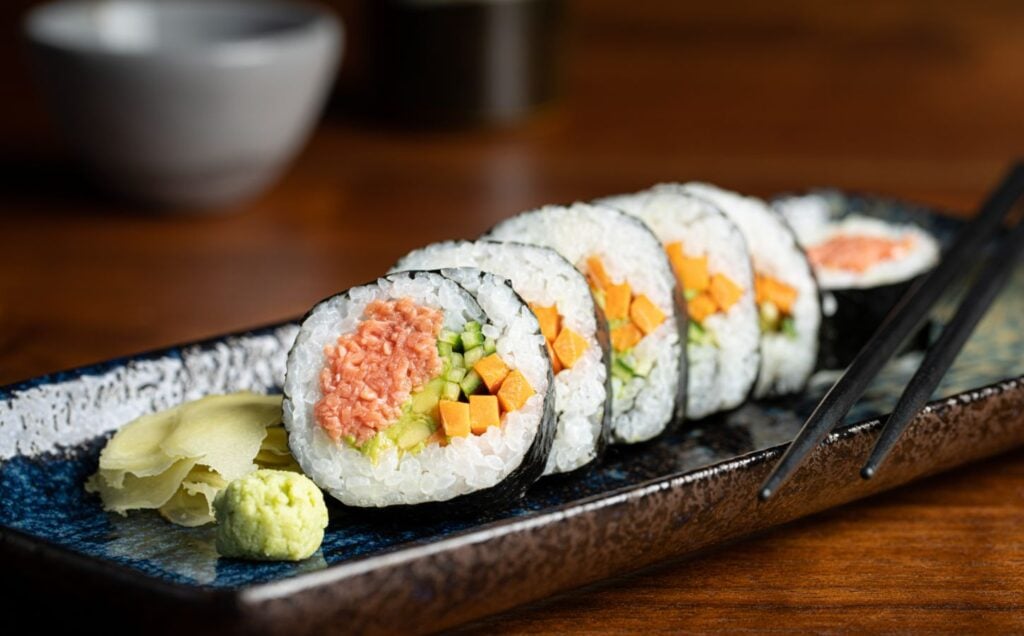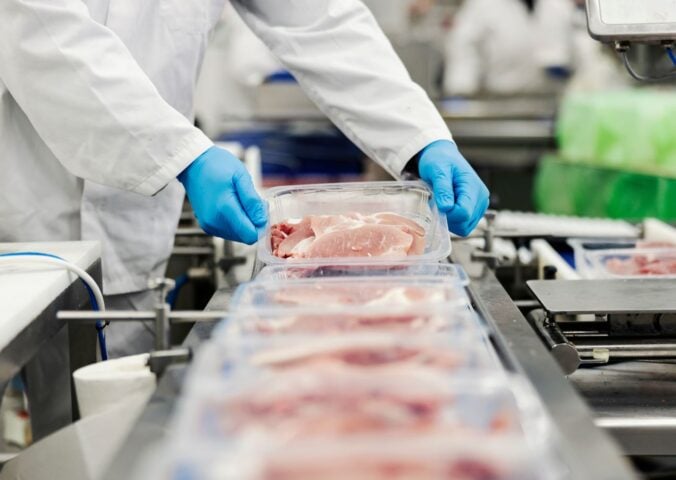For many people, cultured meat — animal meat that can be made without killing animals — sounds like something from a sci-fi film. But “slaughter-free” meat is no longer an oxymoron, thanks to the burgeoning cellular agriculture industry which aims to bring cultivated beef, pork, chicken, seafood, and more to dinner tables across the world.
The idea of creating meat without raising and killing animals has been around since the early 20th century. But it was not until the 21st century that significant advances were made in the field. In 2013, the world’s first cell-based beef burger was introduced by Dr. Mark Post and his team at Maastricht University in the Netherlands, paving the way for further research and development in the area. Post later co-founded Mosa Meat, now a key player in the sector (more on the company below).
Many cultured meat producers claim their products are more environmentally friendly than traditional meat, and can spare the deaths of billions of animals who are farmed for food. The technology may also offer more control over the nutritional profile of meat. And, has the potential to remove some of the health and safety risks of conventional animal consumption.
But what exactly is cultured meat? Here’s what you need to know.
Jump to section:
- What is cultured meat?
- Is it cruelty-free?
- Do vegans support it?
- Is it safe?
- Is cultured meat good for you?
- Environmental impact
- Cultured meat companies
What is cultured meat? How is it made?
Cultured meat is also known as cultivated, cell-based, synthetic, lab-grown, and clean meat, among other terms. It is, in many ways, “real” animal meat – the key difference is how it’s made.
To produce it, cellular agriculturalists extract a small sample of cells, usually muscle cells, from a living animal. This can be done with a muscle biopsy, which typically involves inserting a thin needle into the skin to remove muscle tissue. Cultured meat producers may take a skin sample instead, or collect cells from a bird feather or a fertilized egg. This process does not need to be repeated; one sample can create a “bank” of cells for future use. (Mosa Meat, for example, says that one 1.5-gram sample can produce 80,000 of its cultured beef burgers.)
Lab technicians then analyze the sample and select cells that will work best for whatever product they are recreating. They then place the cells inside bioreactors in a nutrient-rich culture medium containing amino acids, vitamins, proteins, sugars, and more. The solution virtually mimics the inside of an animal’s body, providing the same nutrients, hormones, and growth factors cells need to replicate.
Over time, the cells multiply and grow into muscle tissue. This can then be harvested and processed into meat products such as steak, mince, and other forms that humans have become familiar with eating.
Are animals killed to make cultured meat?
While cell-based meat can theoretically be produced without slaughtering animals, the product is not always cruelty-free. Some cellular agriculturalists have clarified that they do not kill or harm animals during the cell extraction process. The team at Eat Just, for example, claim they collected animal cells by waiting for a feather to naturally fall from a chicken, named Ian. The nuggets that were produced from Ian’s cells were later plated up and eaten outside, while Ian roamed around nearby.
But not all producers have revealed their methods, and some have admitted to rearing animals. Omeat, for example, keeps a herd of “free-roaming” cows on a farm in California. The LA-based company, which entered the cultured meat market in June, collects plasma (the liquid component of blood) from a cow every week.
What to know about FBS
Additionally, many growth mediums used to make cultured products contain fetal bovine serum (FBS). FBS is derived from the blood of a cow fetus and is considered a by-product of meat and dairy production. To collect it, a pregnant cow is slaughtered and has her fetus removed. A needle is then inserted into the heart of the fetus, and their blood is drained into a sterile container or blood bag, left to clot, and later processed into FBS. According to PETA, up to 1.8 million unborn calves are killed every year for FBS.
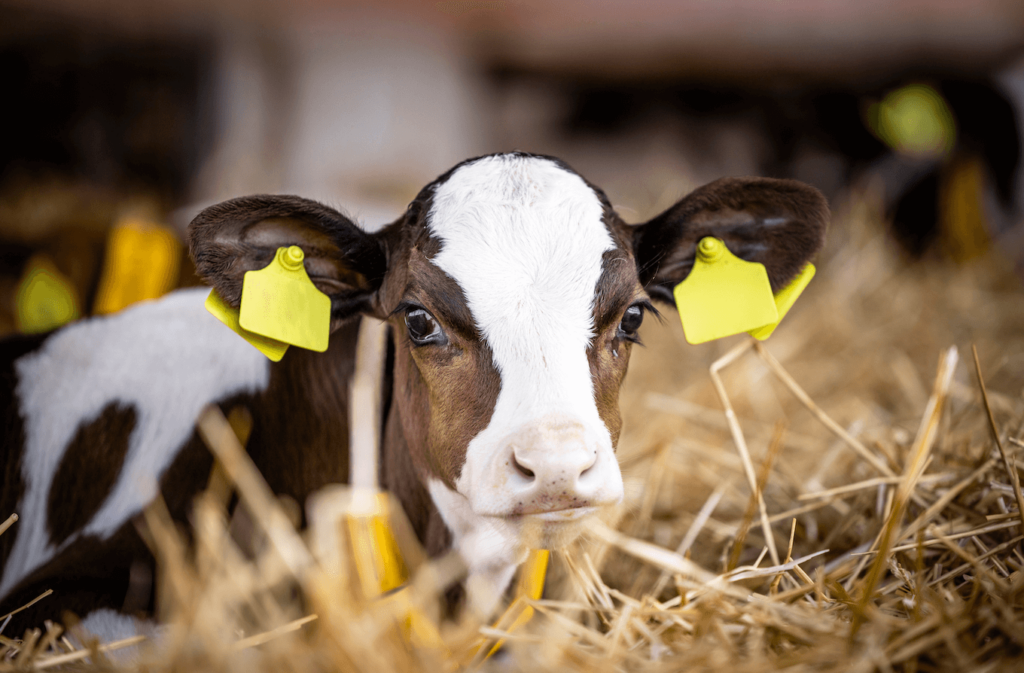
FBS is commonly used in cellular agriculture as it has very low levels of antibodies and large amounts of growth-promoting factors. However, there are alternatives to FBS, and some cultured food producers are already using them. Mosa Meat, for instance, says it developed its own growth media that is free from all animal components. “For us, it’s morally unacceptable,” the company said about FBS. It adds that its animal-free alternative is now “outperforming” the original version in some settings.
BLUU Seafood in Germany and Magic Valley in Australia say they do not use FBS to make their cultured animal protein. Many companies are yet to comment on it.
How do vegans feel about cultivated meat?
Cell-based meat is composed of the same cells and tissues as conventionally produced meat, namely muscle tissue, fat cells, and connective tissue. For this reason, it is not vegan.
However, many people following a vegan lifestyle are supportive of the emerging technology. Given that the process can theoretically be slaughter-free — and that a single cell sample can yield thousands of kilograms of meat — it is predicted that cellular agriculture can make current farming systems even more impractical, inefficient, and needlessly harmful. And, lead to the reduced consumption of traditional animal-based foods.
On the other hand, cell-based meat production requires the use of an animal who cannot consent to being involved. And since the industry is relatively new, little to no regulations are in place to protect the animals being used for their cells. Moreover, many vegans maintain that cultured animal products are unnecessary, given the wealth of plant-based alternatives already available in supermarkets across the world.
Is cell-based meat safe?
As with any new food technology, the safety of cultured meat is a chief concern for many people. And while the product is not yet available in most parts of the world, some governments have welcomed it into their protein regulations.
In the United States, for example, the Food and Drug Administration (FDA) and the United States Department of Agriculture (USDA) work together to assess and regulate the safety of cell-based meat products. In November 2022 and April 2023, respectively, the FDA gave two cellular agriculture businesses — UPSIDE Foods and GOOD Meat — a “No Questions” letter. This signals that the FDA agrees with the companies’ claims that their products are “as safe as comparable foods produced by other methods.”
In June of this year, both brands received full approval from the USDA to sell their chicken in America, the largest economy in the world. This is given alongside “rigorous” assessments of the products as well as the facilities and processes used to create them.
World Health Organisation
Earlier this year, a report from the Food and Agriculture Organisation (FAO) and the World Health Organisation (WHO) concluded that while cell-based meat could come with health hazards, these are largely the same as those connected to traditional meat. And therefore, eating it would be no more dangerous than consuming conventional animal flesh.
For example, the report pinpoints pathogens that can spread from non-human animals to humans, and the use of antibiotics, as potential risks. Many cultivated food brands are yet to comment on their antibiotics policies, which are frequently abused in animal farming.
The report also lists “genetic instability” as a potential hazard. However, it highlights that this is “not unique to cell-based foods” as it is also a risk of “conventional breeding.”
Additionally, people with allergies are likely to be allergic to the cultivated versions of the same foods, the report says.
Is cultured meat healthy?
The jury is still out on the precise nutritional qualities of cell-based meat. While cultivated meat has many of the same nutritional components of “real” animal flesh, more research is needed. According to the FAO and WHO report, for example, it’s not yet clear whether the protein content and profile of cultured meat is the same as its traditional counterpart.
Many cellular agriculturists state that since cell-based meat can be produced in a controlled environment, they can alter the products’ makeup to meet particular nutritional goals. For instance, increasing a meat’s vitamin and mineral levels while reducing fat content.
Cultured fish producer Finless Foods, which also creates plant-based tuna, maintains that its cell-cultured tuna has the full nutritional properties of “wild-caught tuna.” But, without contaminants like mercury.
Environmental impact
Sustainability has been a key argument for cultivated meat since the market picked up around a decade ago. And it’s remained a chief point of interest. The FAO’s 2023 report on cultured meat highlighted this significance:
“With a rapidly rising global population, it is important to carefully assess if cell-based foods would help to provide healthy, nutritious, and sustainable food for future generations, while at the same time reducing environmental impacts by, e.g. using significantly less land and water, emitting fewer greenhouse gases, reducing agriculture-related pollution, improving farm animal welfare, and reducing the risk of zoonotic diseases that can spread from animals to humans.”
Indeed, animal farming is considered one of the most destructive industries on the planet. It’s responsible for 57 percent of food-related emissions, nearly double that of plant foods, and is extremely resource-intensive. Beef and dairy, in particular, require vast amounts of water and land to produce.
Since cell-based meat does not require breeding and raising animals for slaughter, it’s widely considered more sustainable than conventional meat.
Cultured meat brands
There are now more than 150 companies in at least 30 countries working to produce cultured meat. Here are some key brands to know about.
Aleph Farms
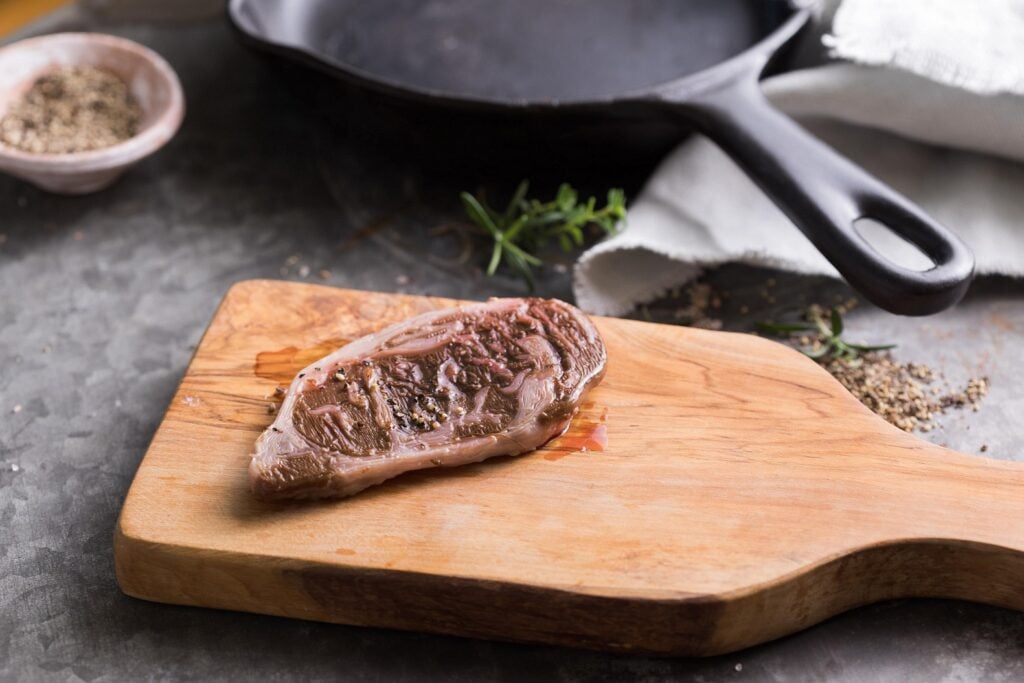
Aleph Farms debuted what’s thought to be the world’s first cultured steak and ribeye in 2018 and 2021 respectively. The Israeli company chose to focus, initially, on beef due to the product’s environmental impact. “Focusing on cow cells enables us to maximize our impact in terms of protecting the climate,” Aleph’s website says.
The company counts Leonardo DiCaprio as an investor. It says it does not use FBS or any other animal-based ingredients in its process, besides the actual cow cells used to make the meat.
BELIEVER Meats

Formerly Future Meat, BELIEVER maintains that “no animals are raised, harmed, or killed in the process” of creating its cultivated chicken, which is free from antibiotics.
The Israeli company, founded in 2018, is focused on “producing meat with unprecedented efficiency.” According to the team, the company’s growth process results in yields that are 10 times higher than industry standards. This, they say, will ultimately help make their products more widely available and affordable.
Tyson Foods, one of the largest animal meat processing companies in the world, is an investor of BELIEVER.
BlueNalu
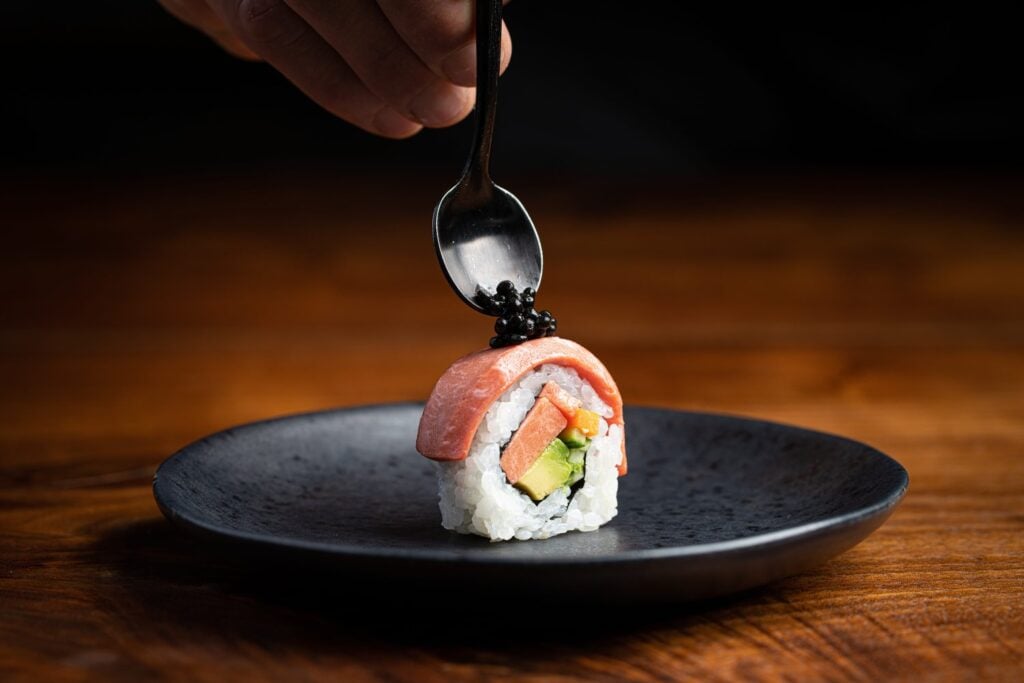
Bluefin tuna is one of the most heavily depleted species in the ocean, largely due to human consumption. BlueNalu’s solution? A cultivated version that, according to the company, is high in omega-3s and offers the same look, taste, and feel of traditional tuna.
BlueNalu says its seafood can be used for sushi, nigiri, sashimi, poke, negitoro, and more. And along with sparing the lives of countless fish, can also help protect the ocean and improve food security.
The San Diego-based company is collaborating with US restaurants for its first launch, which have yet to be announced. After that, it plans on exploring other cultured products, too.
BLUU Seafood
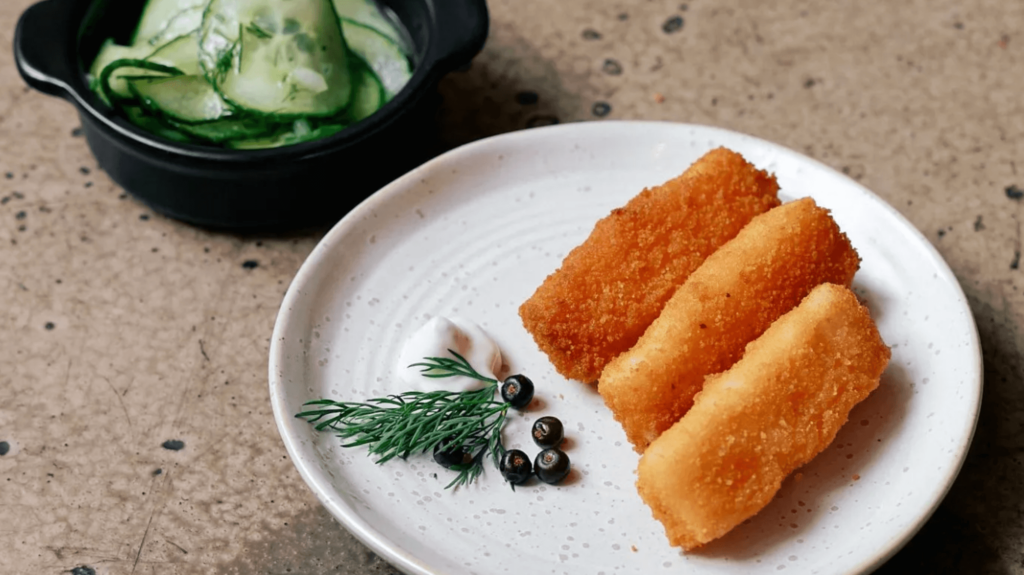
This German company unveiled its first cultured fish products in 2022, two years after its founding in Berlin. This included cell-based fish fingers and fish balls, both of which are enriched with plant proteins.
“The current seafood production systems are destroying our marine ecosystems and directly and indirectly harming billions of animals. We provide an alternative production method for real seafood without wreaking havoc on our oceans,” the team says in their “animal ethics statement.”
They add that using fish cells is more energy-efficient than mammal cells. And, that their growth media is free from animals.
In June 2023, BLUU Seafood raised €16 million, bringing its total to more than €23 million. It plans to use these funds to gain regulatory approval in markets across the world. It hopes to first enter the Singaporean market in 2024, and has begun its FDA approval process in the US. Following that, BLUU plans to launch in the European market.
GOOD Meat
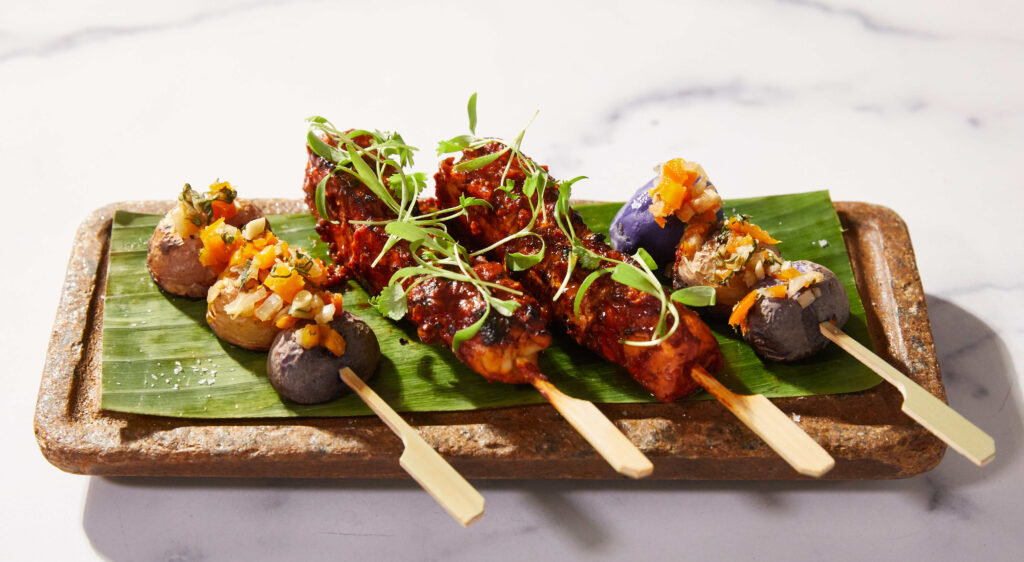
Those who have been following the progress of cellular agriculture will likely be familiar with GOOD Meat. In 2020, the brand, owned by Eat Just, received regulatory approval in Singapore. In doing so, it became the first cultivated meat product to be approved for sale anywhere in the world. GOOD Meat’s chicken has since been sold at hawker stalls and fine-dining restaurants across Singapore. And, notably, a local traditional-style butchery.
Following its recent approval by the USDA and FDA, GOOD Meat made its US debut on July 5, 2023. Then, it was served at an upscale private dinner event at China Chilcano in Washington, DC. Later this summer, from July 31, GOOD Meat’s cultivated chicken will join the official menu at China Chilcano. The eatery is headed by famed chef José Andrés.
It will be served weekly in limited quantities in a new dish by Andrés, called Anticuchos de Pollo.
Mosa Meat
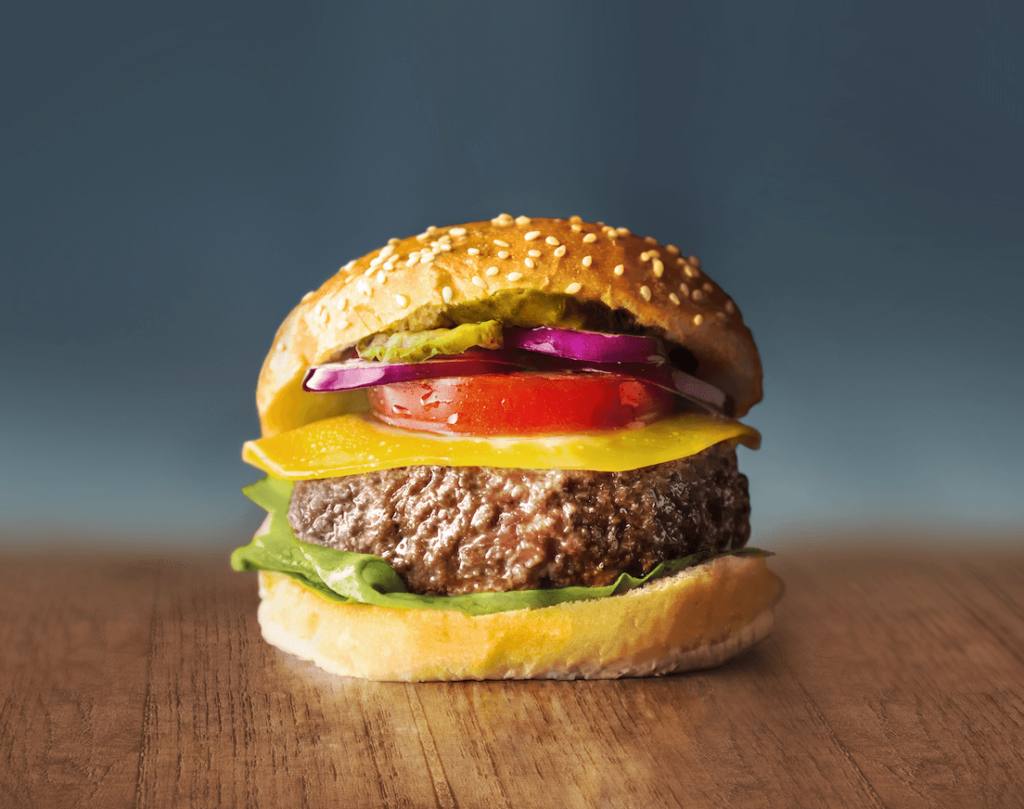
The Dutch company behind the 2013 cell-based burger that broke the internet is still active in the cellular agriculture space. More than 100 people now work there, according to its website, who are “all incredibly passionate about trying to have an enormous positive impact on the environment, animals, food security, and human health.”
DiCaprio is also an investor of Mosa Meat. “One of the most impactful ways to combat the climate crisis is to fundamentally reshape our global food system,” the actor said in 2021, adding that Mosa Meat has “pioneered a cleaner, kinder way of making real beef.”
Shiok Meats
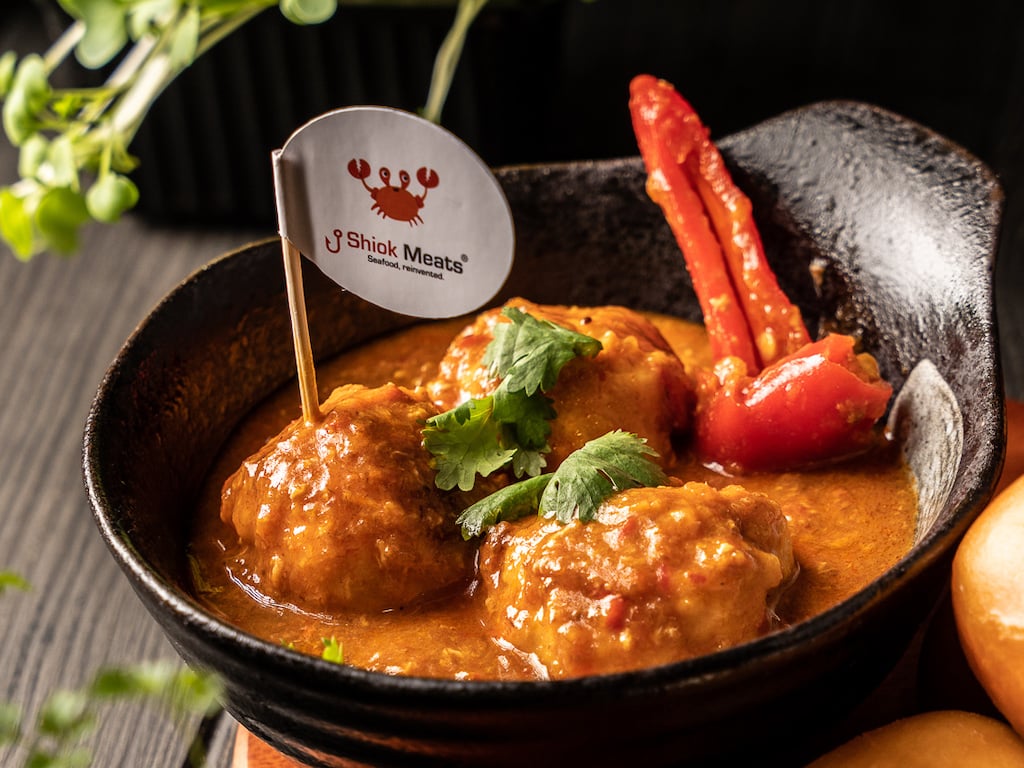
Dr. Sandhya Sriram and Dr. Ka Yi LING founded Shiok Meats in 2018. While many other cellular agriculturalists were chipping away at cell-based beef and chicken, Shiok Meats had its sights set on the seas, producing crab, lobster, and shrimp.
The Singapore-based company claims to be the world’s first cultivated crustacean meat company, and Southeast Asia’s first cultivated seafood company. It also owns Gaia Foods, Southeast Asia’s first cultured red meat company.
“We do not keep any live animals to make our cultivated crustaceans. And we are committed to grow our cells without any animal-derived products such as FBS,” the Shiok Meats website reads. The team adds that their cultured products can sidestep the issue of microplastics and parasites contaminating conventional “seafood.” And, help spare the countless marine animals who die both for human consumption and as “by-catch.”
UPSIDE Foods
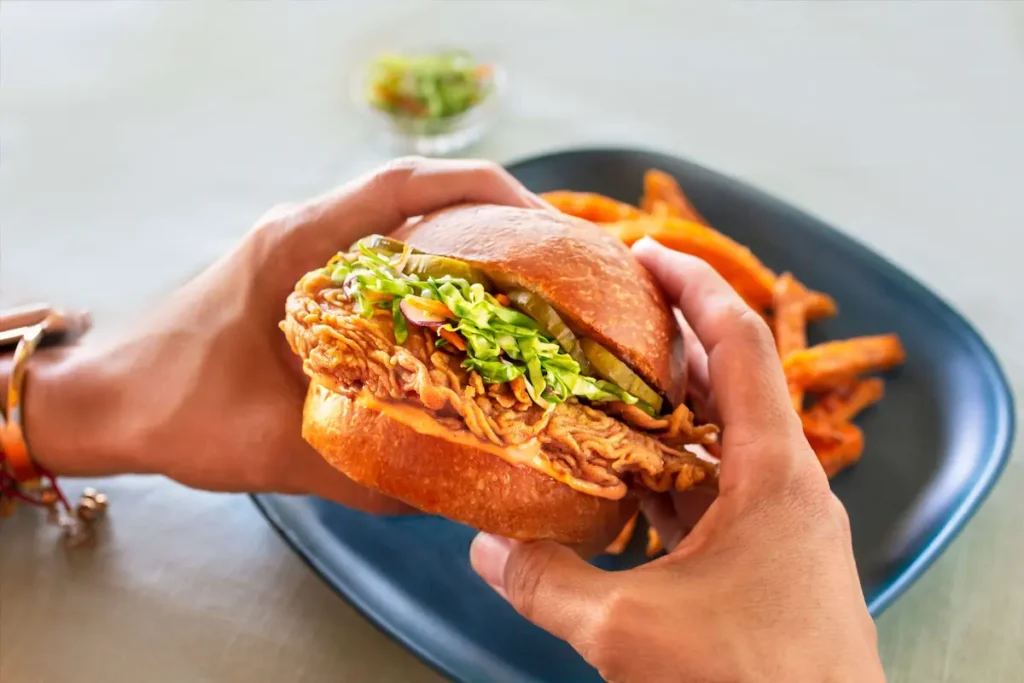
Headquartered in Berkeley, California, UPSIDE Foods is considered by many to be a leader in the cell-based meat landscape. UPSIDE was founded in 2015 as “Memphis Meats.” Since then, it claims to have introduced the world’s first cultured beef meatball, duck, and chicken.
The team is currently focusing on the latter, which has been making waves in the industry as of late. UPSIDE’s chicken was the first cell-based meat to be granted FDA approval. And following a tasting event on July 1, it’s the first cultured meat to be served at a US restaurant. Specifically, the Michelin-starred Bar Crenn in San Francisco, which is led by Chef Dominique Crenn. In a statement, Crenn named the occasion “truly an honor.”
“It’s the first time meat has made it back on my menu since 2018, because UPSIDE Chicken is the first meat that I feel good about serving,” Crenn said. “From its exquisite flavor and texture to its aroma and the way it cooks, UPSIDE Chicken is simply delicious and it represents a significant step towards a more sustainable and compassionate food system.”
UPSIDE Foods will be available at Bar Crenn later this year, when it will join the restaurant’s public menu. According to the company’s website, it still uses FBS to make its products. UPSIDE notes that it’s working to replace it with animal-free components.
—
